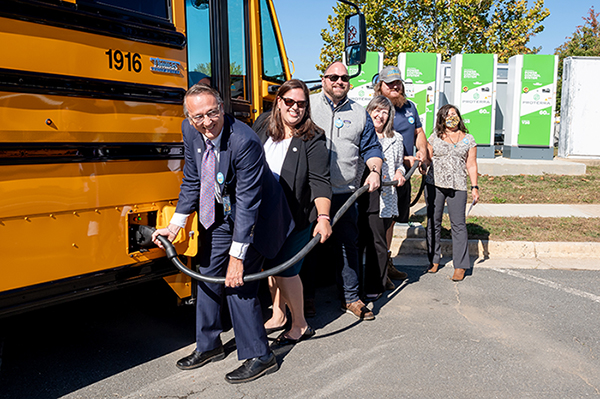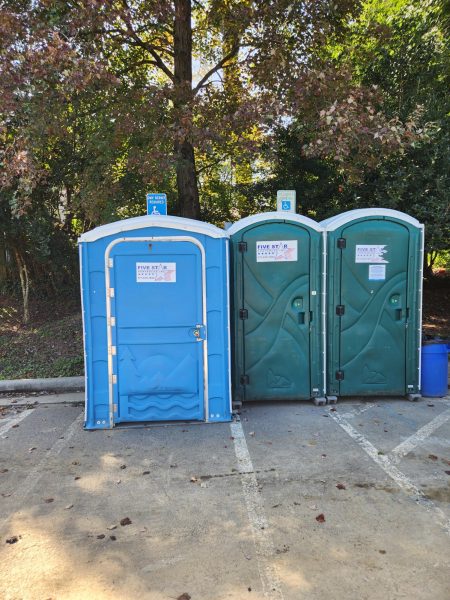New policy protects transgender students
Kaion Fetterman, a transgender AHS alumnus, came out to a few friends in February of 2014, during his senior year of high school.
“As long as I can remember I’ve always felt more comfortable with stereotypical boy clothing, activities, and objects. Around the time I started middle school is when I went through puberty and that’s when I really started feeling different and extremely depressed but I didn’t really know what ‘transgender’ was so I couldn’t figure out what was going on.”
When Fetterman entered high school, things began to change. He started to see transgender people sharing their stories on YouTube and he found that he could relate to their stories. “During my junior year of high school is probably when I started seriously considering that I might be transgender.”
Though Kaion came to terms with his gender identity in his senior year of high school, he chose to wait until after high school to tell his family or start hormone replacement therapy. If Kaion were currently at AHS, however, he might feel more comfortable doing so.
In response to the Obama Administration’s prompting for all public schools to provide greater accommodations for transgender students, FCPS voted 10-1 in favor of adding gender identity to its nondiscrimination policy.
The white house’s directive follows a growing national controversy regarding the use of bathrooms by transgender students in schools. The Obama Administration issued its directive in response to a lawsuit from the Justice Department conducted against the state of North Carolina over a law requiring people in the state to use the bathroom which corresponds to their birth gender.
In order to enforce their directive, the Obama Administration has threatened many school districts with the notion of rescinding federal funds. Though there have been multiple legal issues and much opposition in other states and districts, FCPS’s response came relatively easily.
There were already procedures in place for dealing with transgender students, so adding gender identity to the nondiscrimination policy is mostly a symbolic move, and a response to Obama’s directive. When an FCPS student tells someone on staff that they are transgender, the student, their parents, and the school work together to plan out which bathrooms the student will use in order to make them feel comfortable in their learning environment.
Fetterman feels that transgender students should be allowed to use the bathroom of their preferred gender.
“In my experience, using the bathroom can be a really scary thing for a transgender person, they’re not going to do anything to make themselves stand out more” Fetterman said.
Those who opposed the motion in FCPS worried that students would take advantage of the policy to harass other students or get into a less crowded bathroom.
“While I understand the concern some people have about people saying they’re transgender just to get into the other bathroom, in a school setting, a transgender student is most likely going to be somewhat open with teachers and administrators about how they identify because of name and pronoun usage so differentiating between an actual transgender student and someone just trying to cause trouble is probably not even as big of an issue as people try to make it” Fetterman said.
“I think that people should be able to use whatever bathroom makes them feel most comfortable without restrictions” said senior and president of Gay Straight Alliance (GSA) Olivia Young.“The issue shouldn’t be with LGBT+ people, but rather with teaching people that aren’t on the spectrum not to judge a book by its cover. Keeping trans people out of the bathroom of their identified gender only helps erase their identity. We should be taking steps forward, not back.”
That being said, Young believes that “our schools are a lot more open-minded than other counties, minus one or two people, so kids are
a little more welcome to express themselves even if they can’t do so at home or other places.”
FCPS has not faced quite as much opposition as other school districts, but this action was passed more quickly than in other school systems for a reason.
“A lot of school systems are still trying to follow within the interests of the masses, and that means hearing out a lot of closed-minded people. And, while we deal with that in our county as well, we have amazing board members who are able to argue and push it through” Young said.
“Maybe it’s because of where we live; we’re so close to DC in an extremely diverse area, so we tend to have more diverse board members. The counties that are having the most trouble with this are probably in areas where they’re still trying to teach abstinence as the only form of birth control. It may sound harsh, but they need to realize that times are changing; my advice would be to keep up.”
Young’s voice joins many others in communicating the message that the times are changing, and school systems have to adapt.
Though accommodating transgender students may not have been an issue in the past, it is increasingly prevalent now.
“Sometimes people don’t understand what “transgender” really is. I think it’s important for people to realize that transgender students have probably spent most of their life feeling different or left out when it comes to the gender they identify with” Fetterman said. “Not allowing them to use the bathroom they identify with is going to make them feel more outcasted and uncomfortable or in some cases could even automatically out them to their peers.”

Senior Sadie Modica has been on the A-Blast staff for three years. In addition to her responsibilities as Co-Editor-in-Chief, Sadie is an IB Diploma candidate...








